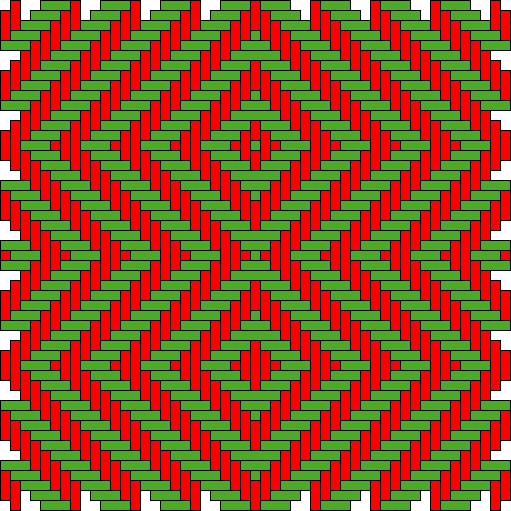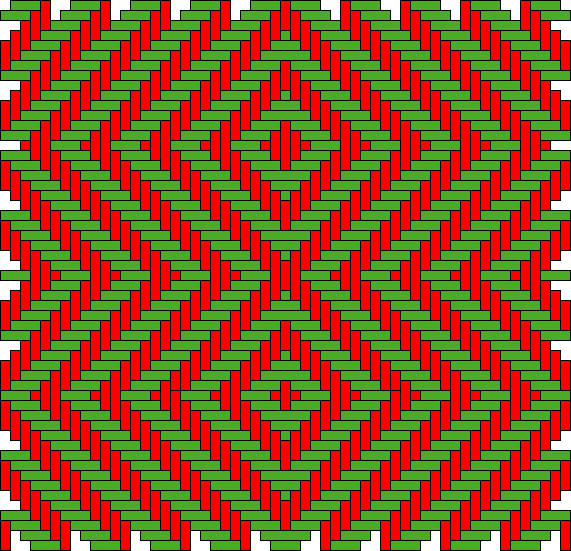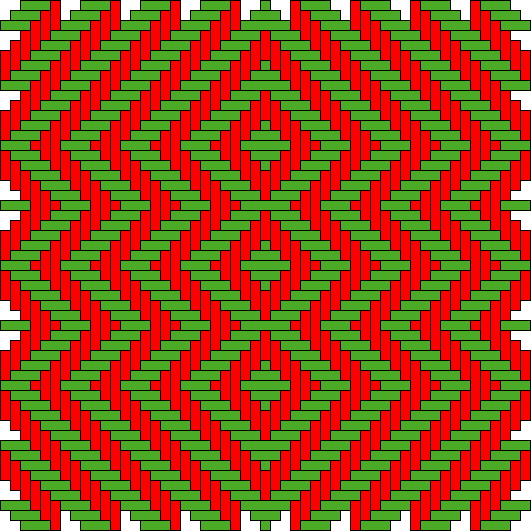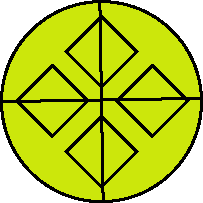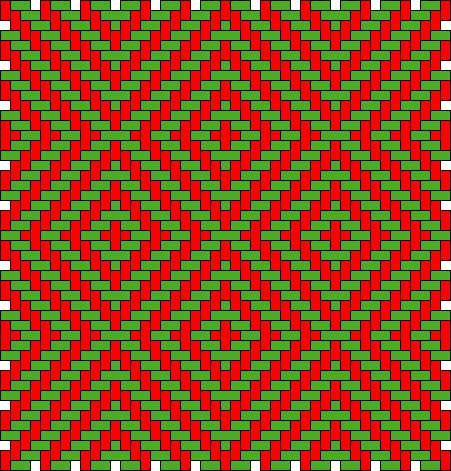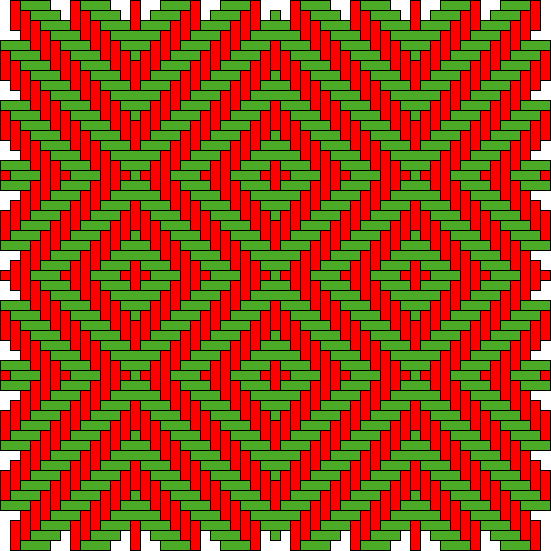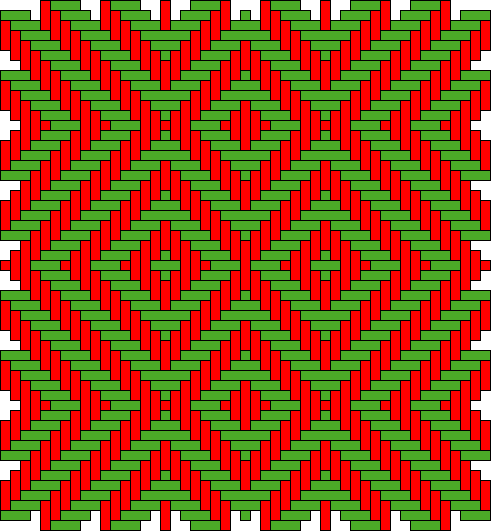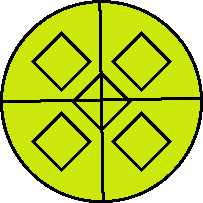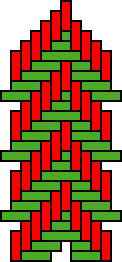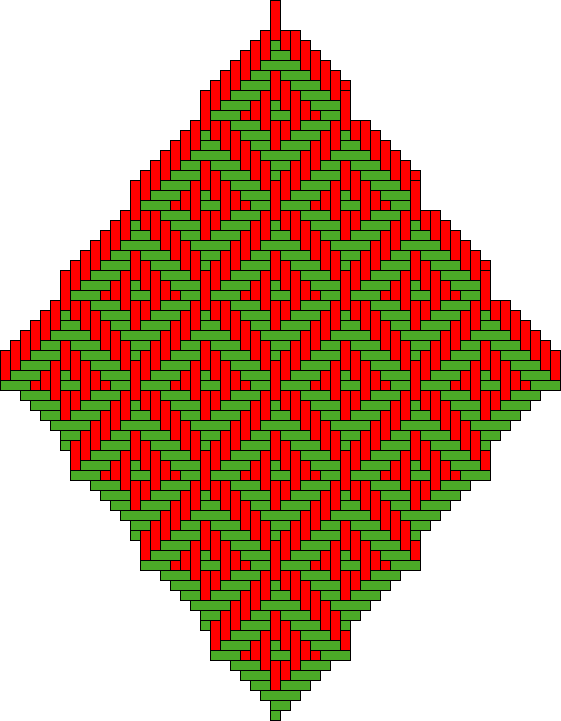| Circular tinhlèlò
basket trays from Manhiça
in the South of Mozambique: Geometrical virtuosity of two Changana basket weavers Paulus Gerdes Mozambican
Ethnomathematics
Abstract:
The
paper presents and discusses the distinct design motifs used by two Changana
basket weavers, Arlindo Bendzana and António Malaice, who live in
Manhiça district in the South of Mozambique to weave decoration
into the circular winnowing trays they make. The winnowing trays were collected
in the period 2003-2004.
On my regular trips (once or twice a month during the last couple of years) to the Gaza Province I pass through a village called Palmeira in Portuguese, supposedly after an old, very tall palm tree visible from far away on the top of a hill. The village is situated in the North of the Manhiça District, about 100 km North from Maputo City. At the village market and along the main street the popular regional transport baskets ndzhàvà (plural: midzhàvà) (Photograph 1) and sitting and sleeping mats are sold, along with smaller quantities of circular basket trays, called rihlèlò (Plural: tinhlèlò) in the Changana language. Two basket weavers, Arlindo Bendzane and António Malaice, both make these circular basket trays with a specific style and technique (Photographs 2a and 2b display two examples).
Bendzane lives near Palmeira but he was born near Chibuto in the East of the Gaza Province, being his grandparents from Chicualala in the Northwest of the same province close to the border with Zimbabwe. On the contrary, Malaice was born and still lives near Palmeira in the Kalanga administrative post, about 20 km East of Palmeira. Bendzana is now in his early sixties and he had learned from his father how to make tinhlèlò. A short while ago he started to teach the craft to his teenager son, a middle school student, who usually is selling his father’s basket trays after school and during the weekends and holidays. After having selected and collected during two years more than fifty of Bendzana’s tinhlèlò, each with a distinct design, I had unexpectedly the chance to meet Bendzana on Sunday May 2, 2004. Photograph 3 shows the geometer-artisan-artist with one of his tinhlèlò together with me, having my tinhlèlò-notebook in my hands. I showed him photographs of all his basket trays in our collection. He was very glad to recognise each of them immediately as his product and invention. Proudly he commented to me, his son and bystanders about his science (interestingly he used the Portuguese word for science, ‘ciência’), trying often to achieve symmetry (‘equal parts’ as he expressed himself) and sometimes to break consciously symmetry.
Most tinhlèlò daily
used in the South of Mozambique both in the households (for instance, for
winnowing maize) and for exhibiting bananas, cashew nuts, peanuts and other
agricultural products for sale are just plainly "over two, under two" (2/2)
woven (or less frequently 3/3), without introducing any particular design.
In this sense both Bendzana’s and Malaice’s tinhlèlò
are very exceptional by the breaking of the regular plain weave to introduce
designs, often accentuated by using plant strips they coloured before interlacing
them.
Bendzana’s tinhlèlò In the period of January 2003 – June 2004
I collected 58 winnowing trays with distinct designs made by Bendzane.
With only one exception, all circular trays have a diameter between 43
and 47 cm. A small tray with a diameter of 35 cm is the only exception
(Photograph 4). It was being used by a woman selling
bananas. As I saw a glimpse of the colourful underside of the basket, I
asked the woman to show and later to sell it to me. Luckily enough for
me, she agreed, as it came out that the tray had an exceptional design
with a double-spiral at its centre (see the weaving texture of the square
mat in Figure 1). From no part of the world I have
ever seen written about or photographs of such a large collection of circular
trays made by the same basket weaver. Bendzana used not less than nineteen
different ‘concentric toothed square’ structures on these trays, being
characterised by the following triplets (D, N, W):
where D represents the dimension of the central toothed square, N the number of concentric toothed squares and W the width of the consecutive rings, corresponding to the 2/2 and 3/3 weaves. Exceptionally, Bendzana creates mixed weaves originating concentric toothed square designs with changing ring width. For instance, on Photograph 5 one observes in the middle of four (5, 3, 3) concentric toothed square structures a structure characterized by the triple (1, 4, 1+3+2+3). Photograph 6 displays a rihlèlò with a (1, 4, 1+2+2x3) structure next to one (5, 3, 3) concentric toothed square structure (see Figure 2).
The basket weaver Arlindo Bendzana (re) created several
basic design textures.
Basic design textures (1) Central concentric toothed square textures Photographs 7a to 7c display three examples of tinhlèlò with a central concentric toothed square texture. In the last case he alternated coloured and natural strands in both weaving directions.
(2) Central X textures Photographs 8a and 8b present two tinhlèlò with a central crossing in the form of an X. In the second case the visibility of the two perpendicular diameters is reinforced by the use of coloured strands.
Next we can distinguish several tinhlèlò with one or more concentric toothed square structures. (3) One set of concentric toothed squares Photographs 9a and 9b present two tinhlèlò with only one concentric toothed square structure at the centre. Figure 3 displays the weaving texture of the second lilhelo.
(4) Two sets of concentric toothed squares In our collection there are seven tinhlèlò with two sets of concentric toothed squares (12 % of the total). Photographs 10a to 10f present six of them. Figure 4 displays schematically the design structure. Figures 5a, b and c represent the weaving textures of the square mats used in the making of the tilhelo in Photographs 10b, 10c and 10e, respectively. I observed only one tray with a set of three congruent concentric toothed squares (see Photograph 11 and the texture in Figure 6).
(5) Four sets of concentric toothed squares The most popular design structure among Bendzana’s winnowing trays is the one with four sets of concentric toothed squares. I collected 17 with this design structure (29 % of the total). Figure 7 displays schematically the design structure. Photographs 12a to 12n present 14 of these tinhlèlò. Figures 8a, b and c represent the weaving textures of the square mats used in the making of the tilhelo in Photographs 12d, 12e and 12f, respectively.
(6) Five sets of concentric toothed squares The second most popular design structure is the one with five sets of concentric toothed squares. I collected 9 with this design structure (16 % of the total). Figure 9 displays schematically the design structure. Photographs 13a to 13g present 7 of these tinhlèlò. See also Photograph 5.
(7) More than five concentric toothed square structures Several tinhlèlò display more than five concentric toothed square structures. Photograph 14 shows one with 6, Photograph 15 one with 7, Photograph 16 one with 8, Photograph 17 one with 13, and Photograph 18 one with 17 concentric toothed square structures.
Bendzana’s favorite texture compositions are the ones with sets of 4, 5 and 2 concentric toothed squares. Photographs 13g, 15, 17, and 19 show four tinhlèlò acquired on May 23, 2004. According to his son, Arlindo Bendzana had designed these especially for me. The symmetry of the centre structures along the vertical axis of the rihlèlò in Photograph 17 was consciously broken, maintaining the global symmetry of the circular basket tray. Photograph 20 displays a lilhelo with two strings of the plane patterns (1, 2, 3, 5×1) and (5, 2, 3, 1×5). Photograph 12g displays a parallelogram of the plane pattern (3, 5, 2, 1×5). Photograph 18 displays parallelograms with the (1, 2, 3, 1×5) plane pattern. The virtuosity of the basket weaver is
also expressed in the way Bendzana uses coloured strands, often to underline
the symmetry axes, sometimes in very particular ways like in Photograph
13a.
Malaice’s tinhlèlò Malaice uses a very original kind of discontinuity lines in his weaving as Figure 10 illustrates. Having the first strip, either on the left or on the right of the axis a vertical displacement of two units instead of one, while on the other side its partner has the normal displacement over one unit, the symmetry is broken. When two perpendicular discontinuity lines meet each other the particular centre structure displayed in Figure 11 results. This type of discontinuity line and corresponding centre structure I had never observed in basket trays from elsewhere in the world (see my comparative study Gerdes 2000). Photographs 21a to f display a sample of tinhlèlò made by Malaice (See also Photograph 2b). The horizontal bands of centre structures in Photograph 21f might be extrapolated to form a plane pattern as illustrated in Figure 12.
Concluding remarks The geometric virtuosity in imagining
and creating designs by the two basket weavers is evident. In the future
I hope that it will be possible to discuss with Bendzana and Malaice which
design structures they learned from their (grand) fathers and how they
did learn it. How they memorise they basic design structures and how they
conceptualise the shapes. It is hoped that further may be done to understand
their personal contribution to the cultural development of tinhlèlò
twill plaiting.
Reference
|




